Feb 19, 2016At Detroit Diesel, there's an area employees call the "green corner." The Daimler Trucks North America affiliate, which builds engines, axles and transmissions for long-haul trucks and other heavy-duty vehicles, has won so many awards for its environmental achievements it had to put up a special shelf to hold them all—including the RFID Journal Green Award, which the company won in 2015 for using RFID to reduce paper waste (see Omni-ID's View 10 Tag Aims to Replace Paperwork at Detroit Diesel, Other Factories).
Detroit Diesel builds engines to customer specifications, so each requires a "build book" to provide workers with assembly instructions and checklists. Last year, Detroit replaced paper build books—each a 40- to 60-page document—with Omni-ID's RFID visual tags, which display instructions.

Before adopting the RFID solution, when customers requested changes after an engine was in production, the new instructions had to be printed, and then operators would tear out the relevant pages and staple in new ones. With the factory pumping out approximately 410 engines daily, the build books consumed roughly 5 million pages annually.
Today, the company can quickly update any changes in the software, and then download the information to the tags. Workers can also use the Wi-Fi-enabled RFID tags to call for needed parts, reducing production delays. "We not only are able to save millions of pages of paper and ink, we can update to build information in real time," says Robert Hyden, a Detroit Diesel systems engineer who served as project leader on the RFID implementation. And because the paper books took manual labor to distribute, "there's a payback in manpower as well," he says (see Visualize This—Detroit Diesel Goes Green With RFID).
"There's tree green and then there's cash green," Hyden says. "At the end of the day, you have to make a profit. On the other hand, you want to be a good corporate citizen. We take into account both profitability and environmental impact when we do a new project." Most of the time, the two objectives are aligned. "I don't think, the way things are going, that you can separate those two," he says.
It's a viewpoint smart business leaders in myriad industries are adopting. "Many companies are actively integrating sustainability principles into their businesses, and they are doing so by pursuing goals that go far beyond earlier concern for reputation management—for example, saving energy, developing green products, and retaining and motivating employees," wrote the authors of a McKinsey & Co. report released in 2011.
In 2015, the firm went back to take a closer look at exactly how becoming greener is
boosting the bottom line for the companies it surveyed. "We found that companies that built sustainability into their operations saw immediate benefits, which gave them the momentum to do even more," the new report noted. Though these benefits included avoiding public relations or regulatory risks, many found the same programs that made them greener also saved them money by reducing the use of resources such as fossil fuels and water, and lessened
the risk of a business disruption should those resources become scarce.
Like Detroit Diesel, other companies are turning to RFID to marry their profit and
sustainability objectives. They are not just claiming to be good corporate citizens—a common PR practice called "greenwashing" that, ultimately, is bad for business. Increasingly, consumers are paying more attention to the environmental impacts of products and manufacturers. Credibility issues can hurt entire industries, exposing them to scrutiny and criticism, and engender mistrust in companies that make false claims. In some cases, companies can be fined for deceptive marketing.
"There are all kinds of examples where practices that conserve resources save money or help a company make more money," says Leslie Downey, principal of RFID Revolution, a Washington, D.C., firm that provides RFID online education and market strategy consulting. "Generally, operating a business more sustainably almost always results in cost savings,"
she says. "I don't think there are too many situations where [those two goals] are at odds. Ultimately, businesses pay more when air and water are polluted."
In retail, for example, "RFID helps reduce out-of-stocks," Downey says. "When that
happens, the company can save money by not having to expedite orders. It can increase
sales because customers find what they're looking for. Customers save money and reduce
emissions by avoiding extra trips to find things that are out of stock."
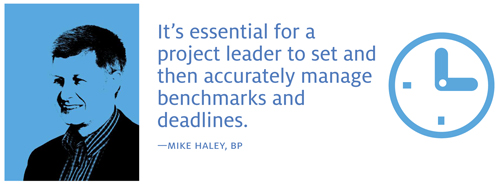
Another example is trash. Cities and towns worldwide are using RFID-enabled waste-collection solutions to track how much garbage they collect from each household, along with other information. The automated systems help eliminate lost revenues from missed pickups and misplaced invoices and enable more efficient truck routes, which save on labor and fuel. In addition, some cities have switched from a flat monthly fee for garbage pickup to a "pay-as-you-throw" model that records and charges each household every time trash is collected. That's created an incentive for households to reduce their trash output and increase their recycling, which is typically collected free of charge. Cities with such systems are seeing meaningful reductions in the waste they collect, which, in turn, impacts the amount of trash that must
be either incinerated or buried in landfills.
Recycling firms are using RFID to improve logistics processes, which also decreases carbon dioxide emissions. In addition, better tracking of assets—from glass bottles to discarded computers and printers—enables the recycled materials to be reused, saving energy while creating new business models (see Finnish Recycling Firm Uses RFID to Create an Efficient and Profitable Business, Brazilian Recycling Plant Uses RFID to Facilitate Reverse Logistics and Extracting New Value From Old Printers).
Here's a closer look at how RFID can help your company make a significant contribution to profit and sustainability.
Reducing Fuel Consumption
Transportation of both people and freight is where RFID is having the biggest sustainability effect and where the technology has the largest potential to reduce the use of fossil fuels, a major contributor to global warming. Fossil fuels burned for air, marine, rail and road transportation account for roughly 27 percent of greenhouse gas emissions in the United States, according to the U.S. Environmental Protection Agency. Globally, the Center for Biological Diversity estimates, 15 percent of carbon dioxide comes from these modes of transportation.
There are many opportunities for RFID to reduce emissions and improve profitability by helping cargo travel from place to place more quickly, says Cliff Gladstein, president of
Gladstein, Neandross & Associates, a Santa Monica-based consultancy that advises clients on clean transportation and reduced energy consumption. "Fuel consumption, emission reduction—literally every measure of sustainability is enhanced when you increase the velocity of freight," he says. "RFID tags facilitate increasing that velocity. Knowing where a box is at all times, knowing when that box was unloaded, what stack it was in at the port, where the truck should pick it up, where to send that truck and how fast it's going and whether to divert it because of traffic—RFID contributes to virtually every step of that process."
Since 2005, PierPass, a not-for-profit organization created by marine terminal operators at the ports of Los Angeles and Long Beach, has required every truck entering the ports have a tamperproof RFID tag mounted on the driver-side exterior mirror. At the marine terminal gates, an RFID reader pings the tag and checks the terminal database to verify that the truck associated with that tag is allowed into the terminal. This ensures that only trucks meeting the strict emissions standards adopted by the ports can gain entry.
RFID also is instrumental in Clean Truck programs now in place at ports on the East and West coasts, as well as the Gulf of Mexico. "Diesel particulates are a known human carcinogen and one of the deadliest pollutants in the air," Gladstein says. In response, many communities are providing funds to trucking companies and individual owner-operators to help them replace older trucks with newer, more fuel-efficient models.
If a community is helping to pay for a newer truck, that community has an interest in knowing the truck is operating within its borders, Gladstein explains, and RFID supplies that information. "A Clean Truck program will demand that the truck spend a certain number of minutes within a geofenced area [a defined boundary tracked by a combination of RFID and GPS] and limit the amount of time it spends outside that area, so RFID tags are critical," he says.
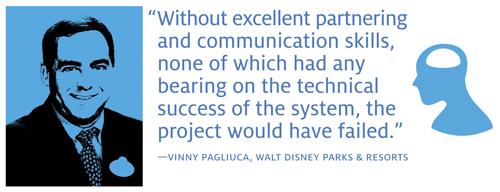
Detroit Diesel is also using RFID for yard management. "As truck trailers come onsite, they're assigned a magnetic RFID tag," Hyden says. "The tugger trucks that deliver them around the plant have RFID readers on top, so we have a real-time map of where everything is." Previously, a company employee had to drive around looking at trailers to find needed parts. "You're easily saving 25 percent on fuel costs annually," he says.
Idling delivery trucks, buses and other motor vehicles in towns and cities worldwide also contribute to air pollution. The idling problem is so bad for the environment and public health that a growing number of U.S. cities and states—including Denver, Hawaii, Las Vegas, Philadelphia and Virginia—have enacted laws against it.
RFID-based toll-collection systems significantly reduce the idling that occurs when a driver waits in line, eliminating gigatons of carbon emissions over time, Downey says. It also facilitates time-of-day tolling—charging discounted or free tolls during off-peak traffic times. That creates an incentive to drive during off-peak hours, which helps ease traffic congestion, reducing emissions even further, she says.
"Another area is automatic vehicle identification [AVI] parking," Downey says. "When you buy a parking pass that's RFID-enabled, you don't need to stop and take a ticket or swipe your card, you just drive on through. That saves a lot of unnecessary queuing by people waiting to get in to work. Employers benefit because employees get to work sooner."
The Lankenau Medical Center installed an AVI system at its Wynnewood, Pa., campus, which eliminates delays caused by congestion and reduces carbon emissions in parking garages. Chapman University in Orange, Calif., deployed an AVI solution that facilitates parking for students and faculty members. Similarly, frequent visitors to the Minneapolis Institute of Art can purchase a "parking debit tag" that is tied to the visitor's account, to expedite entry and exit.
Saving Electricity
Transportation accounts for 27 percent of greenhouse gases in the United States, but it's only the second largest source of these emissions; the largest is electricity use at 31 percent, according to the EPA. Here, too, RFID can contribute to sustainability by helping industries—from perishable foods to IT—reduce electricity use.
"Fruit and vegetables are shipped at field temperatures, typically in the 90s," says Michael McCartney, founder of San Francisco-based QLM Consulting, which focuses on the perishable foods industry. "Once they get to the distribution center, heat has to be taken out."
Each type of produce keeps best at a specific pulp temperature, typically 30 to 36 degrees Fahrenheit for most fruits and vegetables other than citrus. When fruits and vegetables first arrive at the DC, they are often put in long cooling tubes, to cool them down as quickly as possible. Inside these tubes, their temperature may go down quickly, then bounce back up, then sink again. "When the bouncing stops, you can remove the product and get it ready for cold storage and, ultimately, to be put on a truck and sent to a wholesale or retail market," McCartney says.
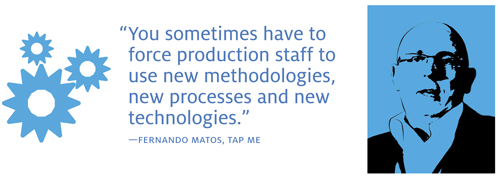
RFID can shorten produce's stay inside those tubes. Tags with temperature sensors attached to pallets provide accurate information on the items' temperature. "Instead of having to blast a tube full of 28 pallets of fruit and wait till all 28 are at the right temperature, RFID tags with sensors tell you that the front third is ready to go and the back third is ready to go, so you start a cycle that's way more efficient," McCartney explains. A 5-hour cooling process can be reduced to 3½ or 4 hours, he says. That's a 25 percent gain that translates into 6 hours of energy use per day.
Once out of the tubes, produce typically moves to a cold room for longer-term storage and eventual distribution. "You have RFID tags with temperature sensors all up and down the racking system and now you have a completely different idea of what's going on in your cold room," McCartney says. "Hot air rises, so from floor to ceiling you'll have a wide range of
temperatures. You may be overcooling, or you may be cooling inefficiently."
More efficient cooling is only one benefit of using RFID in cold-storage facilities. Because the cooling process is shorter, produce moves through the facility more efficiently and can reach markets faster and fresher. In addition, produce distributors that have been able to track the exact temperature at which items have been stored and transported can have a more accurate idea of how long their products will stay fresh. "You could take all that data and extract the information that your product shelf life is nine days or longer or shorter depending on how the product was handled," McCartney says. "You could use that as a strong selling point throughout the buying retail community."
That same shelf-life information can significantly reduce waste, which also contributes to sustainability. "You have three suppliers delivering strawberries," McCartney says. "One lasts nine days, one last 11 days, and one lasts seven days. Right now, they all look the same. But if you have these metrics, you could put the shortest shelf-life ones at the front of the line and the longer ones later. The reason you have food waste is that you have no information on how long a product is going to last, so you lack the information to meet the demand of the store."
The three biggest produce growers in California's Salinas Valley use this system, as does one of the largest berry growers in the world, McCartney says. He adds that RFID adoption should rise significantly during the next five years, particularly since the Food Safety Modernization Act, which takes effect in January 2017, will require growers to monitor environmental conditions.
Data centers—facilities that typically house servers, routers and storage systems—are also turning to RFID to reduce electricity costs. The equipment not only is sensitive to heat but also generates large amounts of heat, so cooling is essential. All too often, however, data centers are cooled excessively. Wireless monitoring systems that use RFID and sensor technologies to gather environmental information in real time enable companies to better manage energy consumption.
Digital Fortress, a colocation data center in Seattle, deployed an RFID energy-management system to better monitor equipment so it could assure customers their servers are protected. At the same time, the solution enables the company to better manage temperature fluctuations, reducing energy usage and maintenance costs (see Digital Fortress Keeps Cool With RFID). California's Department of General Services equipped 12 of the state's data centers with an RFID-based temperature-control system, to reduce energy consumption (see California Data Centers Expect to Cut Energy Usage By 75 Percent).
Protecting Resources
Sustainability issues include risk management of resources that could become scarce and disrupt operations. Sawmill companies and wood products manufacturers, for example, are employing RFID to optimize forest production and improve the quality of wood products, as well as to minimize environmental damage and enable companies to comply with U.S. and European rules barring import of illegal or endangered timber products (see RFID in the Forest).
Almacafé, a subsidiary of the National Federation of Coffee Growers of Colombia, RFID-tracks specialty coffee beans throughout its internal supply chain—from the farms to the warehouses, and during processing and bagging for export to roasting and trading facilities. The program rewards the some 25,000 coffee growers who supply the specialty beans, boosting their standard of living and ensuring a ready supply of beans that enables the Federation to better compete in the global market (see RFID Helps Ensure That Special Cup of Joe).
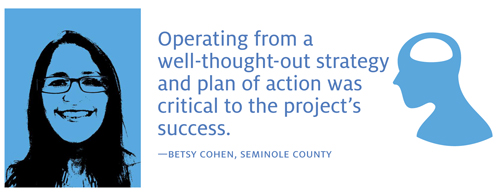
Managing Hazardous Waste
Lufthansa Technik Logistik Services is responsible for logistics services that involve warehousing, transportation and material supply for German airline Lufthansa. Some of the materials essential to keeping a fleet airborne are hazardous substances. The firm developed an RFID item-tracking solution that has yielded economic and green benefits, including: a reduction in labor, inventory, losses due to expired products and costs associated with hauling away hazardous items—and fewer chemicals in the waste stream.
"Sustainability is an important part of the business, and a way to distance ourselves from competitors," says Kathrin Stromann, the RFID project manager at Lufthansa Technik Logistik Services. "RFID is a mainstream part of our business. It is changing a wide range of processes and helping eliminate waste and inefficiency."
Enviro-Energy, a division of Liaison CAN/US Logistics, which specializes in supplying new industrial-size batteries for the telecommunications industry, and in disposing of used ones, is employing RFID to track its battery inventory and comply with customer requests for visibility into the disposal of their batteries. In addition to improving warehouse efficiencies, "we are able to get customers we may not have had in the past," which has contributed to the return on investment, says Alain Perreault, the firm's general manager.
Becoming Green
CEOs who don't believe sustainability can impact the bottom line may change their minds quickly in a world that's increasingly struggling with disruptions caused by climate change and other environmental issues, says David Y. Smith, principal at Orion GBSC Consultants, which advises companies about sustainability issues.
Business leaders must create a forward-looking sustainability strategy. It's only a matter of time until carbon markets, water scarcity and product/packaging recycling costs force U.S. companies to pay attention to their resource consumption, waste production and pollutants, Smith says. "Look at employee benefits and product safety," he adds. "In decades gone by, a lot of companies might not have spent much money on these, but that's changed dramatically as these have become internalized costs."
It's in most organizations' long-term interest to pay attention to sustainability, even without considering cost savings or government incentives, Smith says. Companies should think in terms of what he calls a "triple bottom line." In addition to profitability, "the other two aspects are your company's environmental and social effects," he says.
Smith also reminds companies to think about future generations. Unless we change today's huge level of global consumption, he says, it will worsen the quality of life for the children, grandchildren and great-grandchildren of the people living on Earth today. "Every time you have to procure or rebuild something because you lost it, or move something unnecessarily, you're using resources, man power and energy and that takes away from the bottom line," says Hyden at Detroit Diesel. "The old idea that everything is disposable and you can buy new each time doesn't work anymore."
The RFID Tag Endgame
By David Wilson
While radio frequency identification is beginning to facilitate green initiatives, forward-thinking environmentalists, recyclers and government regulators have long wondered: What's going to happen when RFID tags are used to track everything—from apparel, consumer electronics and pharmaceuticals to cardboard boxes, steel drums and shipping pallets? When glass, paper, plastic and other materials are recycled, will the RFID tags they contain contaminate recycling streams or pollute landfills?
The European Commission asked RAND Europe to examine these issues. The 2012 study, "Smart Trash," considered both the benefits of using RFID for product life-cycle management and recycling—and the environmental impact of the actual tags, which can be difficult to recycle. Emphasizing that the relationship between RFID and waste is "still in its infancy," the authors concluded:
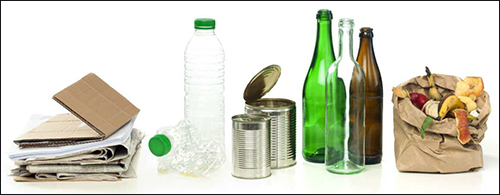
"The nature and applications of RFID tags continue to evolve. While it is important to provide regulatory certainty to encourage beneficial developments, it is equally important not to inhibit or foreclose beneficial progress by legislating too soon, or by adopting inflexible rules tied too closely to specific technologies or use cases." The study found that RFID tags' impact on landfill or waste incineration facilities would likely be negligible, but that the potential effects on recycling merited more thought.
In the United States, the Institute of Scrap Recycling Industries (ISRI)—an association that represents more than 1,600 companies, including manufacturers and processors of electronics, glass, metals, paper, plastics, rubber and textiles—has been monitoring the RFID-recycling issue since 2008. Initial fears regarding the effects of RFID-tagging were premature, says Scott Horne, ISRI's VP of government relations. Early predictions of the widespread use of RFID tags on grocery-store merchandise, for example, have not yet been borne out, he adds.
"I have not had a huge outcry from any sector of our industry in the last year or two," Horne says. Those dealing with steel and other metals are less likely to be affected, he says, but plastic and paper recyclers still have some concerns. "Currently, the tags are not a big issue," says Janette Micelli, a spokeswoman for Waste Management, the largest operator of garbage collection, recycling and landfill facilities in the United States. But, she adds, if the tags become more concentrated, they could cause problems and might have to be recycled separately. RFID tag manufacturers are aware of the issues regarding the recyclability of their products.
"So far, our customers have not raised any concerns," says Christian Achenbach, Smartrac's corporate communications manager. "From an environmental point of view, RFID tags generally become significant when they are applied at the item level," he says. When that happens, he adds, Smartrac is "very keen to cooperate with institutions and RFID industry partners to support the development of new environmental standards."
Some tag manufacturers are working to lessen the impact of their tags on the environment. Avery Dennison, for example, has "taken steps to reduce the plastic content of our tags by about 75 percent," says Leah Johnson, senior manager for global marketing. This, combined with an improved antenna-cutting process and a reduction in size of the silicon chips, Johnson says, has significantly lessened the amount of contaminating material each tag could introduce into the waste stream.
Meanwhile, researchers are working to develop more environmentally friendly RFID tags. Some companies have tried printing antennas, but the cost is often just as high as that of metal antennas, or the performance isn't as good. Some have used metallic inks, but the silver in these inks can be expensive, and some countries have banned them from landfills. Researchers at the University of Manchester are working with graphene antennas that may address these issues.
Illustrations: iStockphoto
